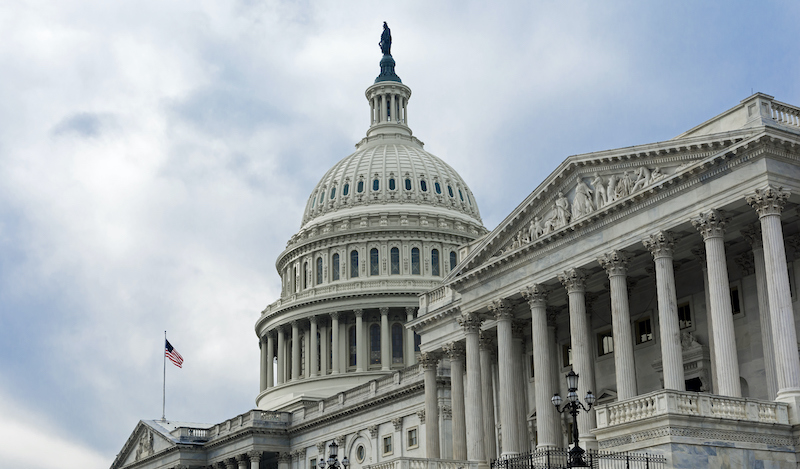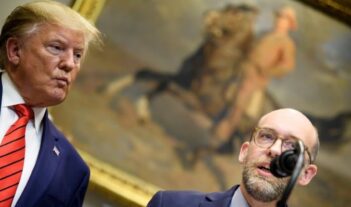
A Government Accountability Office report finds that deregulatory executive orders had limited effects.
Deregulation was a hallmark of the Trump Administration. Before leaving office, the Administration touted having taken over 500 deregulatory actions during its term and argued that its efforts resulted in significant cost savings and helped boost economic growth.
But according to a 2021 U.S. Government Accountability Office (GAO) report, the Administration’s deregulatory campaign fell short of meeting its goals and had limited long-term effects.
Shortly after taking office, President Donald J. Trump issued executive orders directing federal agencies to eliminate two rules for each new one proposed, estimate the costs and savings of doing so, and establish internal regulatory reform teams to promote deregulation. In response to the COVID-19 pandemic, the White House further directed agencies to identify and mitigate the effects of regulations that could hinder the country’s economic recovery from the virus. These executive orders were later revoked by President Joseph R. Biden in January 2021.
GAO, a non-partisan independent agency that reports to Congress, examined the effects of the Trump executive orders on federal agencies. To study the effects of the orders, GAO focused on five agencies which, collectively, were responsible for more than half of the deregulatory actions during the Trump Administration: the U.S. Environmental Protection Agency and the U.S. Departments of Commerce, Interior, Transportation, and Homeland Security. GAO surveyed officials from each of these agencies and randomly selected nine of their deregulatory actions to audit.
The Trump Administration’s deregulatory executive orders imposed several new requirements on agencies. Because any new significant rule needed to be cost-neutral, agencies had to calculate the cost savings associated with repealing existing rules in addition to calculating the costs of the new rule.
All but one of the agencies surveyed reported that the additional requirements from these executive orders did not significantly affect their regulatory agendas. Agencies largely carried out the executive orders without realigning personnel, instead choosing to assign to existing staff new responsibilities—such as membership on the required regulatory reform teams.
An exception was the Department of Homeland Security (DHS), which reported shifting personnel from other work to focus on the Administration’s deregulatory agenda. The U.S. Coast Guard, a DHS component, also noted that it “de-prioritized” 13 maritime safety and security regulations as a result of the requirement that it calculate the costs associated with new or repealed rules.
GAO also found that, although some agencies changed their regulatory enforcement practices during the course of the Trump Administration, none attributed the changes to the deregulatory orders. And although some non-governmental stakeholders reported experiencing changes in federal regulatory enforcement during the Trump Administration, GAO was unable to determine if those occurred as a result of the deregulatory executive orders.
As a process matter, these executive orders resulted in agencies tweaking their existing procedures rather than adopting new ones. The Transportation Department went as far as to publish a rule codifying the procedural changes it made. Because agencies did not make significant changes, officials indicated that the Biden Administration’s recission of the Trump orders would not have a significant effect on future agency regulatory processes.
Following the withdrawal of the Trump-era deregulatory orders, the Transportation Department promptly published another rule rescinding most of its earlier one. All five agencies noted that they would dismantle their regulatory reform teams and stop complying with the Trump-era reporting requirements.
As a substantive matter, the effects of the orders also appear to have been limited, according to GAO. It randomly selected nine deregulatory actions to study. According to the respective implementing agencies, eight of these nine actions would have happened with or without the executive orders. Three of the five agencies noted that the Administration’s deregulatory agenda did not lead them to withdraw planned regulatory actions and that, in many cases, the regulatory and deregulatory actions they took had been planned before the deregulatory orders were issued.
In addition to traditional notice and comment rulemaking, the Office of Management and Budget (OMB) in the Trump White House broadly defined “deregulatory action” to include, among other things, informal rulemaking and amending (or rescinding) information collection requests and guidance documents to make them less onerous. GAO’s analysis found that agencies completed comparatively few of these alternative deregulatory actions. Of the 268 deregulatory actions that the five agencies completed, only about 10 percent fit within this category.
GAO also surveyed non-governmental stakeholders in an effort to understand the effect of the deregulatory orders on the public. Although many of the stakeholders approached by GAO originally greeted the orders with enthusiasm, they were ultimately disappointed with the results. Agencies did accept comments highlighting regulations which might be outdated, but stakeholders felt that few significant actions were taken in response.
The Trump Administration reported that, through fiscal year 2020, the five studied agencies enacted 286 deregulatory actions that resulted in nearly $160 billion in annual savings. GAO, however, argued that the Trump Administration’s methodology may have inflated the purported benefits of the orders. The Trump White House counted only “significant” regulatory actions—which have adverse economic effects of at least $100 million— but considered both “significant” and “nonsignificant” deregulatory actions, which included actions such as delays in effective dates of regulations, withdrawals of proposed regulations, and “significant” deregulatory actions under judicial review.
GAO also noted that the White House’s revised cost accounting guidance to agencies for the purposes of these executive orders was more permissive than the traditional guidance. GAO concluded that this could lead to an overestimation in projected savings when compared to costs calculated under the previous system.
Although the Trump Administration took significant deregulatory steps throughout its term in office, GAO argues that their effects were limited. The Biden Administration’s subsequent reversal of the orders means that the true long-term effects that the Trump orders may have had will never be known.



